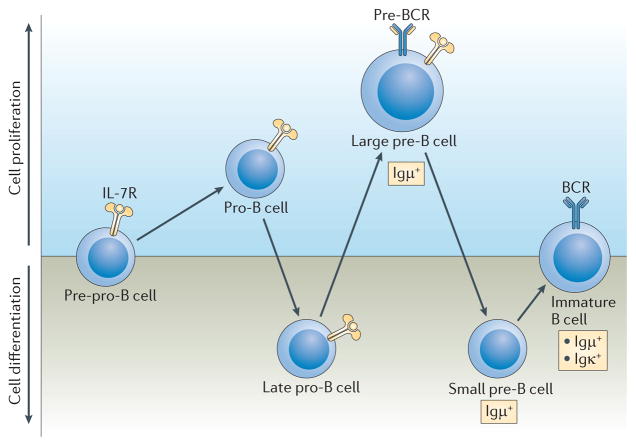Figure 1. B lymphopoiesis.
B lymphopoiesis is a highly ordered developmental process that involves sequential immunoglobulin gene recombination. Proliferation in committed B cell progenitors is dependent on the interleukin-7 receptor (IL-7R), which is first expressed in pre-pro-B cells and has a crucial role in both pro-B and large pre-B cell proliferation. Rearrangement of the Igμ locus begins with diversity (D)–joining (J) rearrangements in pre-pro-B cells that are not yet committed to the B cell lineage. Variable (V)–(D)J rearrangement occurs in the late pro-B cell pool, which contains cells that express lower levels of the IL-7R and are not proliferating. Successful in-frame rearrangements lead to expression of Igμ, which then assembles with the surrogate light chain and Igα and Igβ to form the pre-B cell receptor (pre-BCR) in large pre-B cells. Expression of the pre-BCR is associated with a proliferative burst followed by cell cycle exit and transition to the small pre-B cell stage, the latter facilitates Igκ gene recombination. Cells that undergo in-frame rearrangement of the Igκ gene, and express the Igκ protein, are selected into the immature B cell pool, where mechanisms of tolerance, such as receptor editing, purge the repertoire of self-reactive clones.

